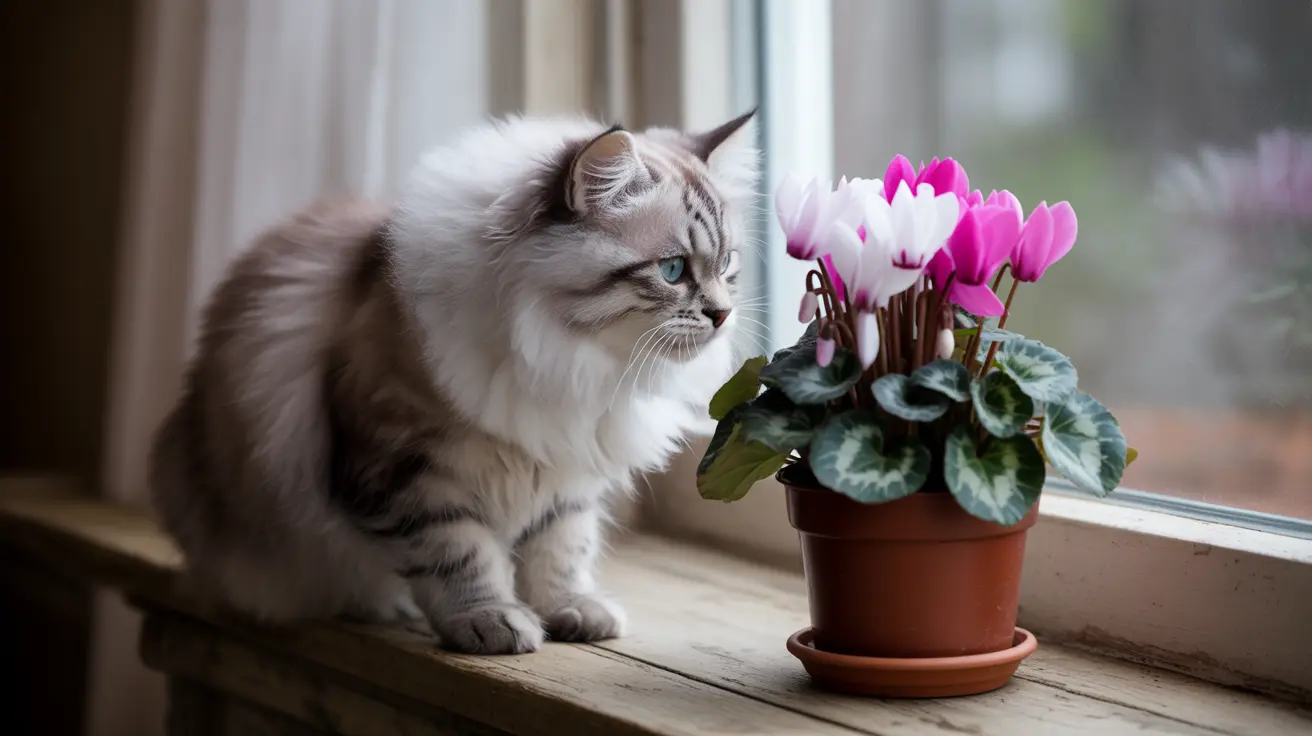When it comes to keeping our feline friends safe, understanding which plants pose risks is crucial. Cyclamen, a popular decorative houseplant, presents significant dangers to cats due to its toxic properties. This comprehensive guide explores why cyclamen and cats don't mix, what to watch for, and how to protect your pet from this common household hazard.
Understanding Cyclamen Plants
Cyclamen, belonging to the Primulaceae family, is cherished for its vibrant winter blooms and distinctive foliage. While these plants add beauty to indoor spaces during darker months, their presence in homes with cats requires careful consideration. The plant features characteristic swept-back petals and heart-shaped leaves, making it an attractive but potentially dangerous addition to your home décor.
The Dangers of Cyclamen for Cats
All parts of the cyclamen plant contain toxic compounds called terpenoid saponins, with the highest concentration found in the tubers (underground portions). These natural chemicals can cause severe reactions in cats, ranging from mild discomfort to life-threatening conditions if ingested in significant quantities.
Most Toxic Plant Parts
- Tubers: Highest concentration of toxins
- Leaves and stems: Moderate toxicity
- Flowers: Lower toxicity but still harmful
Signs of Cyclamen Poisoning in Cats
Watch for these warning signs if you suspect your cat has consumed any part of a cyclamen plant:
Immediate Symptoms
- Drooling and excessive salivation
- Vomiting (may contain blood)
- Diarrhea
- Oral irritation and pain
Severe Symptoms
- Heart arrhythmias
- Seizures
- Severe gastrointestinal distress
- Potential cardiac complications
Emergency Response and Treatment
If you suspect your cat has ingested cyclamen, immediate veterinary attention is crucial. Treatment typically involves:
- Immediate decontamination procedures
- Supportive care and fluid therapy
- Cardiac monitoring if necessary
- Treatment of specific symptoms as they arise
Prevention and Safe Alternatives
The best way to protect your cat is to prevent access to cyclamen plants entirely. Consider these safer alternatives:
- Spider plants
- Boston ferns
- African violets
- Cat grass
- Catnip plants
Creating a Cat-Safe Environment
Take these steps to ensure your home remains safe for your feline companion:
- Remove all toxic plants from your home
- Keep any remaining plants in cat-proof areas
- Provide cat-safe alternatives for plant interaction
- Regular monitoring of your cat's behavior around plants
Frequently Asked Questions
Is cyclamen toxic to cats, and what parts of the plant are most dangerous?
Yes, cyclamen is toxic to cats, with the tubers (underground portions) being the most dangerous part. However, all parts of the plant contain harmful saponins that can cause poisoning.
How can I prevent my cat from eating cyclamen, and what are some safe alternatives?
Remove cyclamen plants from your home or place them in completely inaccessible areas. Safe alternatives include spider plants, Boston ferns, and African violets.
What are the symptoms of cyclamen poisoning in cats, and how quickly do they appear?
Symptoms can appear within hours and include drooling, vomiting, diarrhea, and oral irritation. Severe cases may lead to heart problems and seizures.
Can I treat cyclamen poisoning at home, or do I need to take my cat to the vet?
Always seek immediate veterinary care if you suspect cyclamen poisoning. This is not a condition that should be treated at home.
How can I ensure my cat is safe if I must keep cyclamen plants in the house?
If you must keep cyclamen, place them in rooms your cat cannot access, use hanging baskets well out of reach, or consider artificial alternatives.
Conclusion
While cyclamen adds beauty to our homes, the risk to cats makes it an unsuitable choice for pet owners. Understanding these risks and taking appropriate precautions can prevent dangerous exposure and ensure your cat's safety. When in doubt, opt for pet-safe alternatives to maintain both an attractive home environment and your peace of mind.






